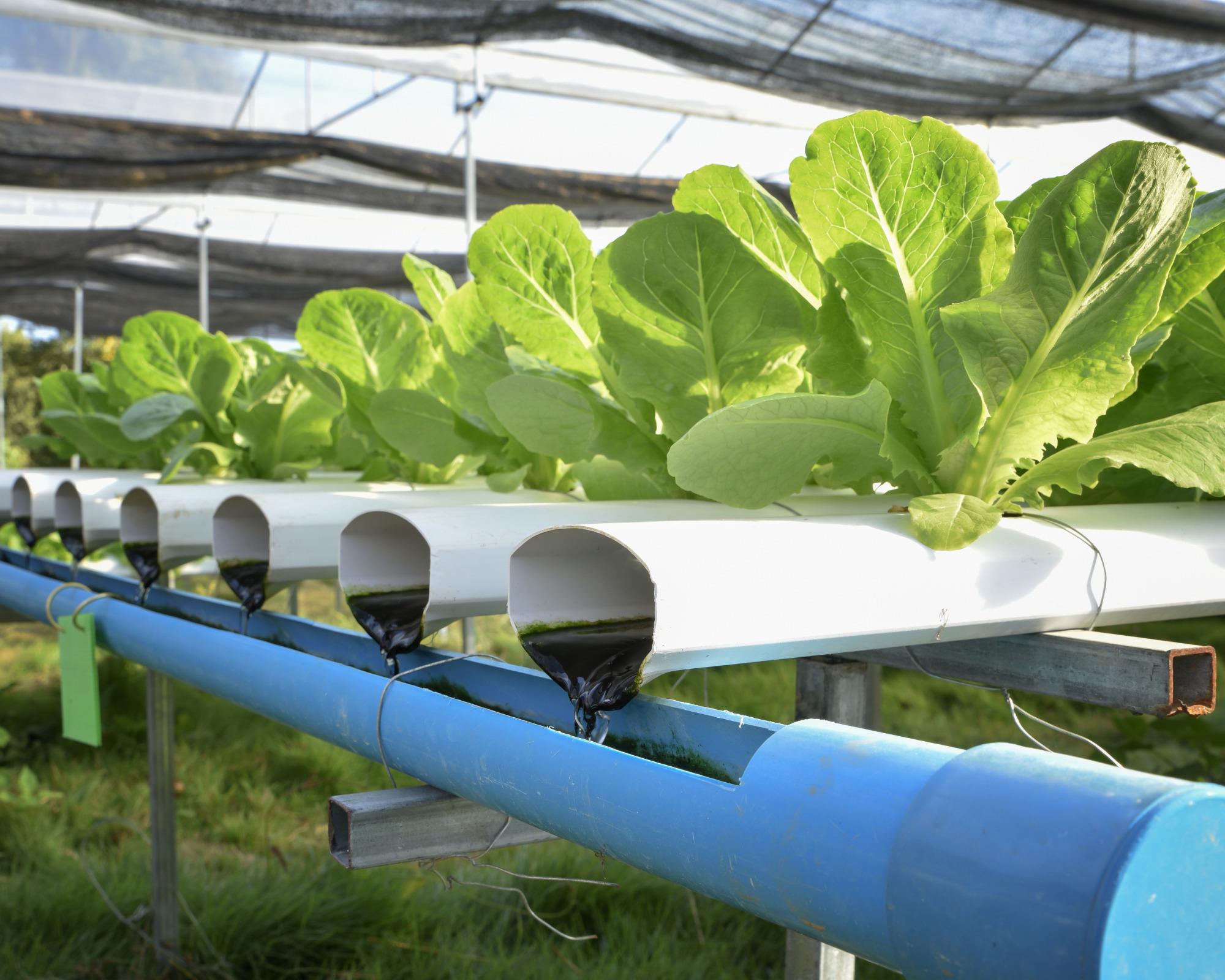Home>Gardening Tips and Tricks>How Much Does Fertilizer Increase Crop Yield


Gardening Tips and Tricks
How Much Does Fertilizer Increase Crop Yield
Modified: January 22, 2024
Learn how using fertilizer can significantly increase crop yield. Discover effective strategies for maximizing yield and improving agricultural productivity.
(Many of the links in this article redirect to a specific reviewed product. Your purchase of these products through affiliate links helps to generate commission for Chicagolandgardening.com, at no extra cost. Learn more)
Table of Contents
- Introduction
- Understanding the Role of Fertilizer in Crop Yield Enhancement
- Factors Influencing the Effectiveness of Fertilizers
- Types of Fertilizers and Their Impact on Crop Yield
- Application Methods and Timing of Fertilizer Usage
- Optimum Fertilizer Rates for Different Crops
- Environmental Implications of Fertilizer Usage
- Maximizing Crop Yield with Fertilizer Management Strategies
- Conclusion
Introduction
When it comes to maximizing crop yield, one powerful tool in the hands of farmers is the use of fertilizers. Fertilizers play a crucial role in providing essential nutrients to the soil, promoting healthy plant growth, and ultimately increasing the quantity and quality of the harvested crops.
The concept of using fertilizers dates back to ancient times, when farmers discovered that adding natural materials such as manure or compost to the soil would improve crop yields. Over the years, fertilizer technology has evolved significantly, with the development of synthetic fertilizers that contain a precise blend of nutrients tailored to meet the specific needs of different crops.
The primary purpose of fertilizers is to supplement the soil with essential nutrients that may be deficient or lacking in the natural environment. These nutrients, including nitrogen, phosphorus, and potassium, are vital for plant growth and development. However, it is important to note that while fertilizers can be highly effective in increasing crop yield, they must be used judiciously and in accordance with scientific recommendations to avoid adverse environmental impacts.
Moreover, when considering the use of fertilizers, it is essential to take into account various factors that can influence their effectiveness, such as soil type, climate conditions, crop variety, and the farmer’s management practices. Understanding these factors and implementing appropriate fertilizer management strategies can help farmers unlock the full potential of their crops and maximize yield.
In this article, we will delve deeper into the role of fertilizers in crop yield enhancement. We will explore the different types of fertilizers available, the optimal application methods, and the recommended rates for various crops. Additionally, we will discuss the environmental implications of fertilizer usage and highlight key strategies for maximizing crop yield through effective fertilizer management.
So, if you’re a farmer looking to boost your harvest or simply someone interested in learning more about the impact of fertilizers on crop production, read on to discover the secrets of maximizing crop yield through the use of fertilizers.
Understanding the Role of Fertilizer in Crop Yield Enhancement
Fertilizers play a critical role in enhancing crop yield by providing essential nutrients that are crucial for plant growth and development. These nutrients, such as nitrogen, phosphorus, and potassium, are often found naturally in the soil; however, they may not be present in sufficient quantities to support optimal plant growth. Fertilizers act as a supplement, replenishing these nutrients and ensuring that plants have access to them when needed.
One of the primary functions of fertilizers is to provide nitrogen to plants. Nitrogen is an essential component of amino acids, proteins, and chlorophyll, all of which are crucial for plant growth. Without sufficient nitrogen, plants may exhibit stunted growth, lower yields, and decreased overall health. By supplying nitrogen in the form of fertilizers, farmers can promote lush foliage, healthy stems and leaves, and increased photosynthesis, all of which contribute to higher crop yields.
In addition to nitrogen, phosphorus is another key nutrient that fertilizers provide. Phosphorus plays a vital role in energy transfer within the plant, promoting root development, flowering, and fruiting. It is especially important during the early stages of plant growth when root establishment is crucial. By incorporating phosphorus-rich fertilizers into the soil, farmers can support robust root systems, leading to enhanced nutrient uptake and improved crop productivity.
Potassium is the third essential nutrient that fertilizers supply. Potassium regulates water uptake, enhances plant durability and disease resistance, and aids in the formation of sugars and starches. Adequate potassium levels contribute to increased overall plant strength, resilience against environmental stresses, and ultimately, improved crop yield.
It’s important to note that each crop type has unique nutrient requirements, and the ideal ratio and quantity of nutrients will vary depending on the specific crop being cultivated. Soil testing can provide valuable insights into the nutrient composition and pH levels of the soil, allowing farmers to tailor their fertilizer application accordingly.
By utilizing fertilizers, farmers can ensure that their crops receive the necessary nutrients for optimal growth and development. However, it’s essential to strike a balance and avoid overuse. Excessive fertilizer applications can lead to nutrient imbalances, environmental pollution, and increased production costs. Careful management and adherence to recommended application rates are crucial to maximize crop yield while minimizing potential negative impacts.
In the next section, we will explore the various factors that influence the effectiveness of fertilizers, enabling farmers to make informed decisions and achieve the best possible results in crop yield enhancement.
Factors Influencing the Effectiveness of Fertilizers
The effectiveness of fertilizers in enhancing crop yield is influenced by several factors that farmers need to consider when developing their fertilizer management strategies. These factors include soil type, climate conditions, crop variety, and the farmer’s management practices.
Soil type plays a crucial role in determining the effectiveness of fertilizers. Different soil types have varying capacities to hold and release nutrients. For example, sandy soils have low nutrient-holding capacity and may require more frequent fertilizer applications compared to clay soils, which have higher nutrient retention. Additionally, soil pH levels can affect nutrient availability. Certain nutrients may become less accessible to plants if the soil pH is too acidic or alkaline. Conducting soil tests can provide valuable insights into the nutrient content and pH levels, enabling farmers to make informed decisions about fertilizer application.
Climate conditions also impact the effectiveness of fertilizers. Factors such as temperature, rainfall patterns, and humidity levels can influence nutrient availability and plant uptake. High temperatures and heavy rainfall can lead to increased nutrient leaching and loss, requiring additional fertilizer applications to compensate for the loss. On the other hand, in arid regions with low rainfall, water scarcity can hinder nutrient uptake by plants. Understanding the climatic conditions specific to the farming area is crucial in optimizing fertilizer usage.
The choice of crop variety is an important factor in fertilizer effectiveness. Different crops have varying nutrient requirements and responses to fertilizers. Some crops may have higher nitrogen demands, while others may require more phosphorus or potassium. Farmers should select crop varieties that align with the soil nutrient composition and apply fertilizers accordingly. This targeted approach ensures that the specific needs of each crop variety are met, maximizing their yield potential.
Another critical factor influencing fertilizer effectiveness is the farmer’s management practices. Proper timing and application methods are essential in optimizing nutrient uptake by plants. Applying fertilizers at the appropriate growth stages ensures that nutrients are available when plants require them the most. Additionally, adopting precision farming techniques, such as split application or fertigation, can help deliver nutrients in a more efficient and targeted manner, minimizing nutrient loss and maximizing crop yield.
It’s important to note that the effectiveness of fertilizers is not solely dependent on the application of the product itself but also on the overall farm management practices. Factors such as proper irrigation, weed, pest, and disease management, and soil conservation measures can all complement the use of fertilizers in optimizing crop yield. A holistic approach that considers all these factors will result in a more sustainable and effective fertilizer management strategy.
In the next section, we will explore the different types of fertilizers available and their impact on crop yield. Understanding these variations will help farmers make informed decisions regarding the choice of fertilizers for their specific crop and soil conditions.
Types of Fertilizers and Their Impact on Crop Yield
There are various types of fertilizers available in the market, each with its own composition and nutrient content. The type of fertilizer used can have a significant impact on crop yield, as different crops and soil conditions may require specific nutrients in varying amounts. Let’s explore some common types of fertilizers and their impact on crop yield.
- Nitrogen-based fertilizers: Nitrogen is one of the most critical nutrients for plant growth. Nitrogen-based fertilizers, such as ammonium nitrate, urea, and ammonium sulfate, provide a readily available source of nitrogen to plants. These fertilizers promote vigorous vegetative growth, improve leaf and stem development, and enhance overall crop productivity. Nitrogen-based fertilizers are particularly beneficial for leafy green vegetables, grasses, and cereal crops.
- Phosphorus-based fertilizers: Phosphorus is essential for root development, flowering, and fruit production. Phosphorus-based fertilizers, such as triple superphosphate and diammonium phosphate, provide plants with an adequate supply of phosphorus. These fertilizers enhance root growth, promote early plant establishment, increase flower formation, and improve overall crop quality. Phosphorus-based fertilizers are particularly beneficial for fruit-bearing plants, such as tomatoes and peppers.
- Potassium-based fertilizers: Potassium is crucial for plant energy transfer, water regulation, and disease resistance. Potassium-based fertilizers, such as potassium chloride and potassium sulfate, supply plants with a sufficient amount of potassium. These fertilizers enhance plant vigor, improve stress tolerance, increase disease resistance, and enhance the quality of harvested crops. Potassium-based fertilizers are beneficial for a wide range of crops, from fruits and vegetables to grains and legumes.
- Compound fertilizers: Compound fertilizers are blends of two or more essential nutrients. These fertilizers are designed to provide a balanced nutrient profile, addressing the specific needs of different crops. Compound fertilizers, such as NPK blends, offer convenience and ease of application, as they deliver multiple nutrients in one product. These fertilizers promote overall plant growth, improve yield potential, and ensure balanced nutrition for optimal crop development. Compound fertilizers are widely used across various crop types and soil conditions.
- Organic fertilizers: Organic fertilizers are derived from natural sources, such as animal manure, compost, and plant residues. These fertilizers provide a slow-release supply of nutrients to plants and improve soil fertility over time. Organic fertilizers enhance soil structure, promote microbial activity, and enrich the soil with organic matter. Their impact on crop yield is not immediate but leads to long-term improvements in soil health and nutrient availability.
It’s important for farmers to consider the nutrient requirements of their crops and the specific characteristics of their soil when selecting the appropriate type of fertilizer. Soil testing and nutrient analysis can provide valuable insights into the existing nutrient levels, allowing farmers to make informed decisions about the type and dosage of fertilizer to apply.
In the following section, we will explore the optimal application methods and timing of fertilizer usage, which are crucial in ensuring effective nutrient utilization and maximizing crop yield.
Application Methods and Timing of Fertilizer Usage
The application method and timing of fertilizer usage are crucial factors in ensuring effective nutrient uptake by plants and maximizing crop yield. Let’s explore some common application methods and best practices for timing the use of fertilizers.
Broadcasting: Broadcasting is a common method where fertilizers are spread uniformly across the entire field using equipment such as spreaders. This method is suitable for crops that have a uniform nutrient requirement and can promote even nutrient distribution. However, there is a risk of nutrient loss due to runoff or leaching, especially in sloped areas or areas with heavy rainfall. Farmers should consider soil conditions and terrain when using this method.
Band application: In band application, fertilizers are applied in concentrated bands or rows near the seed or root zone. This method ensures that the nutrients are placed in closer proximity to the growing plants, increasing the likelihood of uptake. Band application is especially beneficial for crops with high nutrient demands during early growth stages when the root system is not fully developed. It is important to avoid direct contact between the fertilizer and the seeds or roots to prevent crop damage.
Fertigation: Fertigation involves the application of fertilizers through irrigation systems. This method allows for precise and targeted delivery of nutrients directly to the root zone. Fertigation ensures efficient nutrient uptake as the fertilizers are dissolved and evenly distributed in the irrigation water. This method is particularly useful in areas with limited water availability as it combines irrigation and fertilization, saving time and resources. However, proper monitoring and calibration of the irrigation system are essential to avoid over or under-dosing of fertilizers.
Foliar application: Foliar application involves spraying fertilizers directly onto the leaves of plants. This method allows for quick nutrient absorption through the foliage and can provide an immediate nutrient boost. Foliar application is beneficial for correcting nutrient deficiencies or providing supplemental nutrients during critical growth stages. However, it should not be relied upon as the sole method of fertilizer application, as the leaf surface area is limited, and the nutrients may not reach the roots.
Now, let’s discuss the timing of fertilizer usage. The timing of fertilizer application is crucial as it must align with the crop’s nutrient demands during different growth stages. Applying fertilizers too early or too late can result in inefficient nutrient uptake and potential crop damage. Some general guidelines for fertilizer timing include:
- Pre-planting: Some fertilizers, such as phosphorus-based fertilizers, are best applied before planting to promote early root growth and establishment.
- Side-dressing: Side-dressing involves applying fertilizers during the growing season, either by placing it in bands beside the crop row or incorporating it into the soil. This method allows for targeted nutrient application as the crop’s nutrient demands increase.
- Top-dressing: Top-dressing is the application of fertilizers on the soil surface after the crop has emerged. This method is useful for supplying additional nutrients during specific growth stages or to address nutrient deficiencies.
- Split application: Splitting the fertilizer application into multiple doses throughout the growing season can ensure a continuous supply of nutrients and better nutrient utilization by the plants.
It’s important to consider the specific nutrient requirements of the crop, soil conditions, and local climate when determining the timing and method of fertilizer application. Regular soil testing can provide valuable insights into nutrient deficiencies or imbalances, enabling farmers to make informed decisions about fertilizer timing and dosage.
In the following section, we will explore the recommended optimum fertilizer rates for different crops and the importance of managing fertilizer applications to minimize environmental impacts.
Optimum Fertilizer Rates for Different Crops
Setting optimum fertilizer rates for different crops is essential for maximizing crop yield while minimizing the risk of nutrient excess or deficiency. The specific nutrient requirements of each crop can vary based on factors such as crop type, growth stage, soil nutrient content, and yield goals. Here, we explore some considerations for determining the optimum fertilizer rates for different crops.
Crop nutrient requirements: Different crops have varying nutrient demands based on their growth habits, yield potential, and nutrient utilization efficiency. For instance, high-yield crops such as corn or tomatoes require more nutrients to support their growth compared to low-yield crops like legumes. Understanding the specific nutrient requirements of each crop is crucial in determining the optimum fertilizer rates.
Soil nutrient analysis: Conducting regular soil testing to assess the nutrient content and pH levels of the soil helps farmers tailor their fertilizer application. Soil nutrient analysis provides insights into the existing nutrient levels and identifies any deficiencies or imbalances. This information guides farmers in determining the appropriate fertilizer rates and selecting the right types of fertilizers.
Crop rotation and previous crop history: Crop rotation is a common farming practice that involves alternating different crops on the same piece of land. It helps break disease cycles, improve soil health, and optimize nutrient utilization. When determining fertilizer rates, consider the previous crop’s nutrient residues and the nutrient demands of the next crop in the rotation sequence.
Yield goals: Farmers should consider their desired crop yields when setting fertilizer rates. Higher yield goals often require increased nutrient inputs to meet the crop’s increased nutrient demand. However, it is important to balance nutrient inputs with sustainability to avoid excessive use of fertilizers with associated environmental risks.
Regional recommendations and guidelines: Local agricultural extension services and research institutions often provide regional recommendations and guidelines for optimum fertilizer rates based on years of research and field trials. These recommendations take into account specific regional factors such as soil types, climate conditions, and predominant crop varieties. Farmers should consult these resources to ensure their fertilizer rates align with the best practices in their region.
It’s important to note that fertilizer rates are not fixed and may need adjustment based on crop response and field conditions. Monitoring plant growth, nutrient deficiency symptoms, and yield outcomes can help fine-tune the fertilizer rates in subsequent growing seasons to achieve optimal results.
Furthermore, adopting precision farming technologies and tools can aid in determining the optimum fertilizer rates. These technologies, such as remote sensing, satellite imagery, and soil sensors, provide real-time data on crop health, nutrient availability, and soil conditions. This data-driven approach allows for more precise and efficient fertilizer management, reducing nutrient wastage and enhancing crop yield.
In the next section, we will discuss the environmental implications of fertilizer usage and highlight the importance of managing fertilizer applications sustainably.
Environmental Implications of Fertilizer Usage
While fertilizers play a crucial role in enhancing crop yield, their usage can have significant environmental implications. Improper fertilizer management practices can result in negative effects on water quality, air pollution, and biodiversity. It is essential for farmers to adopt sustainable fertilizer application strategies to minimize these environmental impacts.
Water pollution: One of the primary environmental concerns associated with fertilizer usage is water pollution. When excessive fertilizers are applied or improperly managed, nutrients such as nitrogen and phosphorus can leach into groundwater or runoff into nearby water bodies. This nutrient runoff can lead to eutrophication, a process where excessive nutrients cause algal blooms, deplete oxygen levels, and harm aquatic ecosystems. To mitigate water pollution, farmers should carefully follow recommended application rates, avoid over-fertilization, and implement best management practices to minimize nutrient loss through erosion and runoff.
Air pollution: Nitrogen-based fertilizers can contribute to air pollution through the volatilization of ammonia, which can react with other pollutants and form fine particulate matter (PM2.5) and ground-level ozone. These air pollutants have adverse effects on human health and the environment. Implementing more precise application methods, such as fertigation or band application, can reduce ammonia emissions and minimize air pollution. Additionally, timing fertilizer application during cooler periods and avoiding application when rainfall is expected can also minimize ammonia loss into the atmosphere.
Greenhouse gas emissions: The production and use of fertilizers can contribute to greenhouse gas emissions, mainly through the manufacturing of nitrogen-based fertilizers. The production process, particularly the synthesis of ammonia, requires significant amounts of energy, often sourced from fossil fuels. This results in the release of carbon dioxide and other greenhouse gases. Proper management practices such as optimizing fertilizer rates, using slow-release or controlled-release fertilizers, and adopting organic farming methods can help reduce greenhouse gas emissions associated with fertilizer usage.
Ecological impact: Excessive or unbalanced fertilizer application can disrupt soil biology and negatively impact biodiversity. High nitrogen levels can alter soil microbial populations, leading to imbalances in nutrient cycling and affecting the overall soil ecosystem. Additionally, excessive phosphorus runoff into freshwater systems can promote the growth of harmful algal blooms and deplete oxygen levels, causing harm to fish and other aquatic organisms. Employing precision agriculture techniques, such as variable rate application, can ensure that nutrients are applied where they are most needed, reducing the potential ecological impact.
To minimize the environmental impact of fertilizer usage, farmers should prioritize sustainable and responsible fertilizer management practices. This includes regular soil testing to determine nutrient requirements, following recommended application rates, employing precise application methods, and implementing conservation practices such as cover cropping and erosion control. By adopting these practices, farmers can promote crop productivity while protecting and preserving the surrounding environment.
In the next section, we will explore effective fertilizer management strategies that farmers can employ to maximize crop yield while minimizing environmental impact.
Maximizing Crop Yield with Fertilizer Management Strategies
Effective fertilizer management is essential for maximizing crop yield while minimizing environmental impact. By implementing the following strategies, farmers can optimize nutrient utilization, promote sustainable agriculture, and achieve higher crop productivity.
Soil testing and nutrient management: Regular soil testing is crucial in understanding the nutrient content, pH levels, and overall health of the soil. This information enables farmers to make informed decisions about fertilizer application. By conducting soil tests, farmers can identify nutrient deficiencies or imbalances and tailor their fertilizer application to address specific crop needs. Implementing nutrient management plans based on soil test results ensures that the right nutrients are applied in the right quantities, optimizing crop yield.
Targeted and precise application: Applying fertilizers in a targeted and precise manner ensures that nutrients are delivered where they are most needed. This can be achieved through techniques such as fertigation, where fertilizers are applied through the irrigation system, or band application, where fertilizers are placed near the root zone of the plants. By precisely placing the nutrients, farmers can minimize nutrient loss through runoff or leaching and maximize nutrient uptake by the crop.
Use of slow-release or controlled-release fertilizers: Slow-release or controlled-release fertilizers are designed to gradually release nutrients over an extended period. These types of fertilizers provide a steady and continuous supply of nutrients to plants, reducing the risk of nutrient leaching and runoff. By utilizing slow-release or controlled-release fertilizers, farmers can enhance nutrient-use efficiency, minimize nutrient loss, and promote even and sustained crop growth.
Crop rotation and cover cropping: Crop rotation involves planting different crops in a sequential manner on the same piece of land. This practice helps break disease cycles, improve soil health, and optimize nutrient utilization. By rotating crops, farmers can balance nutrient demands and reduce the risk of nutrient depletion. Cover cropping, which involves planting non-profitable crops during fallow periods, helps prevent nutrient loss through soil erosion, improves soil organic matter content, and enhances nutrient cycling. These practices contribute to the overall health of the soil and lead to increased crop yield.
Proper irrigation and water management: Proper irrigation management plays a critical role in fertilizer effectiveness. Over-irrigation can lead to nutrient leaching, wasting both water and nutrients. Under-irrigation can hinder nutrient uptake and lead to crop stress. By implementing efficient irrigation practices, such as drip irrigation or moisture sensors, farmers can ensure that water and nutrients are used effectively, promoting optimal crop growth and yield.
Integrated pest and nutrient management: Integrating pest and nutrient management practices helps minimize the use of chemical inputs and optimize fertilizer usage. By implementing integrated pest management strategies, farmers can reduce the risk of pest and disease outbreaks, ensuring that the crop remains healthy and nutrient uptake is maximized. This holistic approach leads to improved crop health, reduced dependency on synthetic pesticides, and enhanced overall crop yield.
By adopting these fertilizer management strategies, farmers can maximize crop yield while minimizing potential environmental impacts. It is essential to strike a balance between providing adequate nutrient supply to crops without over-application, ensuring that nutrients are utilized efficiently and sustainably. Sustainable fertilizer management practices not only benefit crop productivity but also contribute to the long-term health and viability of agricultural systems.
In the final section, we will conclude our discussion and summarize the key takeaways regarding the maximization of crop yield through fertilizer management.
Conclusion
Fertilizers play a vital role in maximizing crop yield by providing essential nutrients to plants. However, their usage requires careful consideration and management to minimize environmental impacts and promote sustainable agriculture. By understanding the role of fertilizers in crop yield enhancement, considering factors that influence their effectiveness, and implementing appropriate application methods and timing, farmers can optimize nutrient utilization and achieve higher crop productivity.
Optimum fertilizer rates for different crops should be determined based on crop nutrient requirements, soil nutrient analysis, crop rotation, and regional recommendations. Precision application methods such as fertigation and band application help ensure that nutrients are targeted and efficiently delivered to the plants. Incorporating slow-release or controlled-release fertilizers can provide a sustained nutrient supply, reducing losses and improving nutrient-use efficiency.
Environmental implications of fertilizer usage, such as water pollution, air pollution, greenhouse gas emissions, and ecological impact, can be mitigated through responsible fertilizer management practices. These practices include following recommended application rates, employing precision agriculture technologies, and adopting sustainable farming practices such as crop rotation and cover cropping.
By utilizing fertilizer management strategies that prioritize soil testing, targeted application, and nutrient optimization, farmers can achieve higher crop yields while minimizing negative environmental consequences. Proper irrigation and water management, integrated pest and nutrient management, and balancing crop nutrient demands contribute to sustainable agricultural systems and long-term soil health.
In conclusion, maximizing crop yield through fertilizer management is a multidimensional process that requires a holistic approach. By combining scientific knowledge, regional guidelines, and best management practices, farmers can optimize fertilizer usage, promote sustainable agriculture, and ensure food security for the growing global population.










